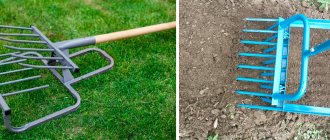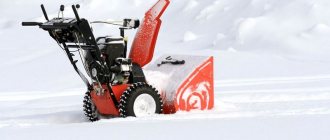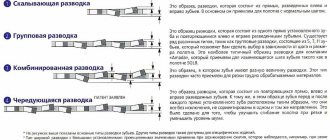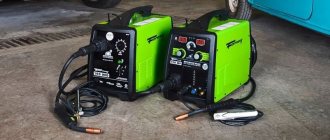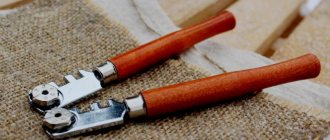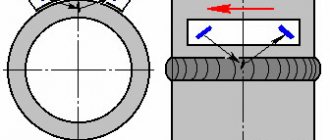Advantages
They are used for digging up soil; they are much lighter and more convenient than shovels. Working time is reduced.
- No soil sticks to the teeth. Easily enters the ground.
- The shape does a great job of picking up vegetables such as potatoes and digging them out.
- The teeth, when digging, cause less damage to plants.
Multifunctionality.
Advantages and disadvantages
Like any tool, the miracle shovel has its drawbacks, which you should be aware of when purchasing it:
- The device is only suitable for straight areas - it will not work to dig up the soil figuratively. Narrow and curved areas will have to be processed manually.
- For the process to be effective, a person’s weight must be at least 80 kg, otherwise it will not be possible to dig up the ground to a given depth.
- The tool will not be able to dig holes.
- It is impossible to work in low greenhouses.
- If the mechanism breaks, repair will not be easy.
- The weight of the product is much higher than the weight of a conventional bayonet shovel, which can lead to severe fatigue at the end of the job.
Expert opinion
Kuznetsov Vasily Stepanovich
For some, these disadvantages may seem decisive, but do not forget about the undeniable advantages of choosing a cultivator: speed of tillage, minimal effort and ease of use.
Types of pitchforks
This is a very versatile tool and can be used for different jobs.
There are:
Manure, garden for transferring manure or fertilizers have a specific design, concave teeth. Due to which it is easy to tolerate more humus or other minerals. Carefully placed throughout the field.
- Four-prong or garden forks, the most popular and optimal for all types of work. They have a slightly curved shape, very easy to use when carrying heavy loads. The equipment is divided into forged ones, these are cast pitchforks. Welded, where additional teeth are welded to the outer blades.
- The latrines have 4 blades. They help in cleaning the area in the fall from fallen leaves and other debris. If the villas have plastic or rubber balls at the ends of the teeth, this will make it easier to harvest the root vegetables without damaging them at all.
- For harvesting hay, the tool may have 3-5 more blades. This helps to quickly remove the hay. Here the teeth are more than 60-70 cm long and very sharp. The longer the blade, the more hay you can carry at one time. The handle can sometimes be up to 2 m long. Wooden forks are also in demand on the farm.
- For flowers, the tool is much smaller in size. It is convenient for them to work in the flowerbed without touching the flowers. Lightweight, light weight, can even be used by children. Very popular among women, you can quickly dig up beds for planting seedlings or flowers.
Pointed, have sharp blades that can quickly loosen the soil. They are mainly used on light soils for applying fertilizers.
Spade forks have recently appeared on the market. The tool consists of two parts. From teeth and bayonets. Where, when digging, one row of teeth passes between the other, which makes the work much easier. Additional blades loosen the soil into small pieces. They penetrate the soil without any problems and cut the roots of weeds. This makes digging up heavy soil easier.
- Telescopic, equipment where you can control and adjust the handle to suit the height of any person. They quickly gained popularity among gardeners for their ease of use.
- Digging, the strongest and most reliable equipment. They can cope with any task in the garden. Also included in this type are forged forks, which are heavy in weight, but do an excellent job of removing weeds and leveling the soil.
- Ball ones have their own differences. The teeth contain rubber or metal balls. With such equipment it is very easy to harvest without damaging it.
- Lightweight ones, of course, are an option for women. Small size, easy to use.
Crushed stone, used for small construction and installation work, such as crushed stone or similar materials. It has 8 blades, which is very convenient for work.
For stables, made in the form of a scoop from high-quality plastic, with flexible teeth. Designed for cleaning horse manure.
Handling the hand cultivator
Of course, it takes some time to get used to a hand-held cultivator, but after it you don’t need to additionally loosen the soil - a regular garden rake will suffice. With proper use, the product's performance will only increase.
People who have already used this miracle product give some useful tips:
- You should not try to plow wet soil with a miracle shovel: a lot of effort will be spent, but there will be no benefit.
- When cultivating virgin soil, it makes sense to first remove the turf with a bayonet shovel.
- You need to work from the far end of the uncultivated land to the near end, backwards.
- If different people will work with the cultivator, the handle should be adjustable.
Have you already used the miracle shovel?
It happened! It didn’t happen
You should take care of the cultivator in the same way as other garden tools. It is stored under a canopy, protected from rain and monitored for rust formation. On the eve of winter, carefully wipe all teeth from any remaining clay and polish them with a dry cloth. Moving fasteners may be lubricated with machine oil during storage.
Whether or not to purchase a miracle shovel is, in any case, the choice of the gardener himself, but it’s probably worth listening to the voices of the happy owners. Ours is no longer the worst and poorest quality. It’s better to try than not to decide and then regret it.
New rotating forks
A new type of equipment that has appeared relatively recently is rotary forks. Makes working in the garden or field much easier. All teeth have different widths. Only one long and sharp blade.
When working, it sticks into the ground, and the rest of the wedges automatically go in with it. The frame then rotates around this tooth. Which acts as a repeat mechanism.
- The stalk has a specific shape that spreads the ground.
- Available in different sizes.
- The most popular is 30 cm. It can have from 2-7 teeth.
How to choose the right one
Before you buy, you need to decide for what purpose the equipment is intended.
The most common options:
- For digging the ground.
- Harvesting hay.
- Manure.
- Garden.
- Vegetables.
What else is worth paying attention to:
- The working part of the fork and its application. If for flowers there is a narrow view. Medium tool for manure and harvesting. Wide for hay.
- Number of teeth. The universal option is four-pronged, and they must be the same size. Located at an equal distance from each other. But everything depends on the execution of the work. Three-pronged forks for loosening the soil. Manure, hay - 4.5 teeth. If in shape: wide for excavation work. Sharp for easy carrying. Curved for manure.
- Material. Always made from steel with anti-corrosion coating. They are considered the most reliable equipment. They are not afraid of bad weather. No need to store in a special place. But their price is much higher than their analogues.
- Cutting. Wooden is lightweight and standard. But it is susceptible to sun and moisture. It is necessary to do timely preventive maintenance by covering with varnish or paint. Durable, it's metal, but it's very heavy. Lightweight, plastic, but it is not suitable for all jobs and can quickly break. Optimal, aluminum with handle.
Length is an important point when choosing. If you buy for excavation work, a length of 110-120 cm is suitable. If for harvesting hay or fertilizer, then 150 cm is better.
Tips for use
Proper use of forks for their intended purpose can significantly facilitate work on a personal plot.
- First, the teeth must be strong. You cannot dig up the ground with thin teeth, this will only lead to breakage of the product.
- The cutting is no less important. If you need to loosen the soil, choose equipment with smaller cuttings.
- If you move something more authentic.
- An important point: the cutting must be shoulder-length to the person digging. Telescopic forks are considered the best option.
Before purchasing forks, decide what type of work you need them for. This is the most important criterion. Treat your forks with care and they will last for many years in your summer cottage.
The working principle of the miracle shovel
Thanks to minimal physical effort, the instrument can be used by people with spinal diseases and pensioners. The soil is loosened by a pitchfork, and there is no need to turn it over. The back not only does not participate in the process, but generally remains straight, excluding the endless bows and squats characteristic of ordinary digging of a garden.
The algorithm of actions is very simple:
- The cultivator handle is placed vertically, and the fork teeth rise behind it.
- The worker stands with his foot on the stop or the upper bridge of the main forks and presses with his body.
- The teeth stick into the ground and the stalk pulls back. The forks lift a layer of soil that passes through the second forks and is crushed there.
- The worker takes another step back to the uncultivated area of the garden and repeats all the steps again.
At first glance, it may seem that moving backwards is not very convenient, but there is still land ahead, ready for sowing, which does not require additional effort. Moreover, a manual ripper does not plunge a thin fertile layer into the soil, as happens with a bayonet shovel.
Moreover, this amazing invention successfully digs up potatoes, collects leaves and branches from the ground in the fall, and scatters manure. Enterprising gardeners can replace up to five gardening tools with it, without experiencing the excessive stress that was inevitably associated with cultivating land in the past.

